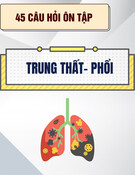
The pharmacological potential of Phyllanthus niruri
Nathanael Y. S. Lee
a,
*, William K. S. Khoo
a,
*, Mohammad Akmal Adnan
a
, Tanes Prasat
Mahalingam
a
, Anne R Fernandez
a
and Kamalan Jeevaratnam
a,b,c
a
Perdana University - Royal College of Surgeons in Ireland, Serdang, Selangor, Malaysia,
b
Faculty of Health and Medical Sciences, VSM Building,
University of Surrey, Guildford, UK and
c
Physiological Laboratory, University of Cambridge, Cambridge, UK
Keywords
drug development; Phyllanthus niruri;
therapeutic potential
Correspondence
Kamalan Jeevaratnam, Faculty of Health and
Medical Sciences, University of Surrey,
Guildford, Surrey, GU27XH, UK.
E-mail: drkamalanjeeva@gmail.com
Received August 31, 2015
Accepted March 29, 2016
doi: 10.1111/jphp.12565
*Both authors contributed equally to the
manuscript.
Abstract
Introduction Phyllanthus niruri is a traditional shrub of the genus Phyllan-
thaceae with long-standing Ayurvedic, Chinese and Malay ethnomedical records.
Preliminary studies from cell and animal model have provided valuable scientific
evidence for its use.
Aim This review aims to summarize selected scientific evidence on the pharma-
cological properties of P. niruri over the past 35 years while identifying potential
areas of further development of this herb as an economical adjunct.
Methods The review covers literature pertaining to the evidence base therapeutic
potential of P. niruri spanning from 1980 to 2015 available on PubMed.
Results Evidence suggests that the extracts of P. niruri possess hepatoprotective,
antiviral, antibacterial, hypolipidaemic, hypoglycaemic, analgesic, anti-inflamma-
tory, cardioprotective, anti-urolithiatic and antihyperuricaemic properties due its
novel bioactive compounds.
Conclusion Scientific evidence suggests that there is strong pharmacological
potential in developing P. niruri as a drug to be used in liver disorders and in
antiviral therapy. Despites this, large-scale heterogeneity in study protocol and
unstandardized reporting standards limit the ability for valuable comparison and
may mask the ability to replicate these studies. Thus interpretation of findings
should be performed with caution and further studies should be performed in
line with best practices. More cheminformatics, toxicological and mechanistic
studies would aid the progress to clinical trial studies.
Introduction
Phyllanthus niruri is a perennial tropical shrub, which has
been used for a wide range of diseases in South and south-
east Asian traditional medicine, including but not limited
to jaundice, diarrhoea, dyspepsia, genitourinary infections
and renal stones. In Brazil, where the plant is known as
‘Chanca Piedra’ or ‘stone breaker’, preparations of P. niruri
are considered folk remedies for renal and vesicular cal-
culi.
[1]
Traditional medicine systems, such as Ayurvedic
and Unani medicine, have utilized the leaves and fruit, to
treat gallstones and jaundice. In Malay traditional medi-
cine, P. niruri, vernacularly known as ‘dukong anak’, is used
for kidney disorders and cough.
[2]
In South India, where
the herb is called Bhumyamalaki, the herb is believed to
treat constipation, gonorrhoea and syphilis.
[3]
In northern
India, this herb locally known as ‘pitirishi’ has gained a
reputation as a household remedy for asthma, bronchitis
and even tuberculosis.
[4]
The young shoots of this herb
may at times be used as an infusion in cases of chronic
dysentery.
[5]
Among traditional Chinese medicine circles,
P. niruri or ‘zhu zi cao’ has traditionally been used to allevi-
ate liver injury secondary to various hepatotoxic agents. In
fact, ever since the landmark animal study by Venkates-
waran and colleagues which demonstrated for the first time
in vivo the potential anti-hepatitis B activity of P. niruri,
[6]
this herb has received significant scientific interest leading
to a range of studies looking at the various therapeutic
potential of this plant species.
Phytochemical studies on this plant, from as early as
1861 when Ottow first isolated the lignan phyllanthin from
this plant,
[7]
to as recent as the isolation of potential anti-
HBV phytochemicals nirtetralin and niranthin,
[8,9]
have
revealed that this plant is rich in tannins, flavonoids,
©2016 Royal Pharmaceutical Society, Journal of Pharmacy and Pharmacology,68 (2016), pp. 953–969 953
Review






























